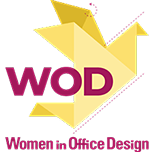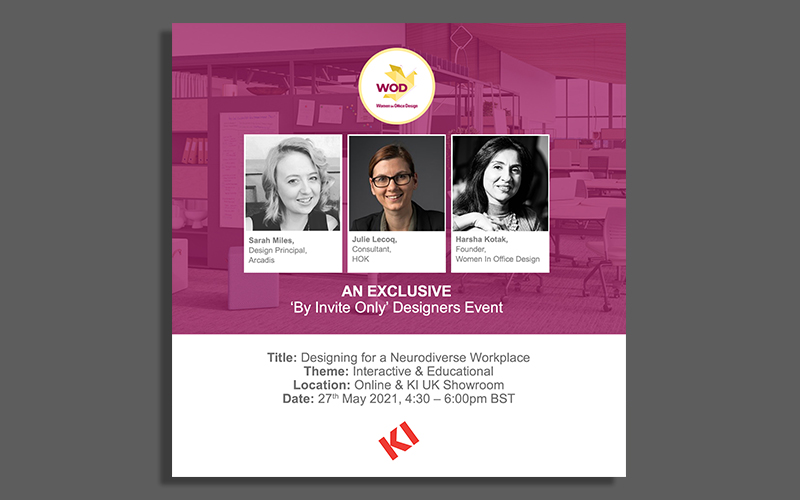“One in eight people are considered neurodiverse, yet fewer than 50% know it.” This revealing statement was an important ‘take away’ from Julie Lecoq, consultant at HOK, during her opening address at the recent WOD seminar, ‘Designing for a Neurodiverse Workplace’.
Sponsored by KI Europe, the event was designed to provide an interactive platform for designers to discuss how to create neurodiverse workplace environments and the importance of communicating the corporate benefits to clients.
Neurodiversity is an umbrella term incorporating a range of neuro developmental and lifelong conditions. ADHD, Dyslexia, and Autism Spectrum Disorder are examples, and all impact on individuals in different ways as well as varying in complexity and severity.
“People who are not working in the appropriate environment will be less productive,” continues Julie Lecoq. “It can also lead to mental health issues. Neurodiversity can bring great talent to the workforce – we should see each person as an individual with each adding something extra to team. We cannot maximise people’s potential unless we understand their needs and create a variety of micro environments within the workplace.”
Some people would be described as ‘hyper sensitive’ and find certain spaces as too overwhelming and, therefore, distracting. Others would be termed as ‘hypo sensitive’ and respond positively to a highly stimulating environment.
The event included an overview of several different space plans developed by HOK to demonstrate the application of different work settings. HOK has made these reports and examples available for download to encourage more design professionals to embrace neurodiversity considerations.
The event also included a presentation by Sarah Miles, Principal Workspace Consultant at Arcadis. She explained how challenges and questions raised by a major client resulted in the evolution and development of KI’s Colonade range.
During the group discussion, it was agreed that clients are now much more in tune to employees’ well being. It is essential that users are involved in the design and development process right from the start and this is then continued with trials and pilot projects. Sarah provided an example of how floor textures and colours can have a dramatic impact for visually impaired people.
One of the audience members provided a great summary of the challenge facing the design community: “There are competing agenda in workplace design. We must make the business case for diversity, equity and inclusion.”
Women in Office Design was founded in May 2018 by Harsha Kotak, an interior designer with a vision to inspire and empower women working in all areas of the office design industry. WOD is a growing network of 2000 plus global members with chapters in London, Birmingham, Spain and now India. There are plans to expand to other major cities nationally and internationally.
Launched this year, the new WOD-Digital app provides a platform for collaboration, learning and networking with the rapidly expanding community women across the globe. Find out more here.
Watch the full video below:
You can join WOD Digital to register for all events by visiting: www.woduk.com/digital

